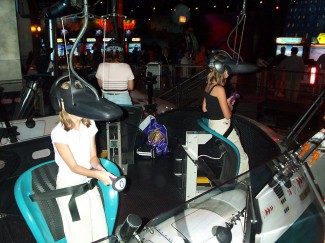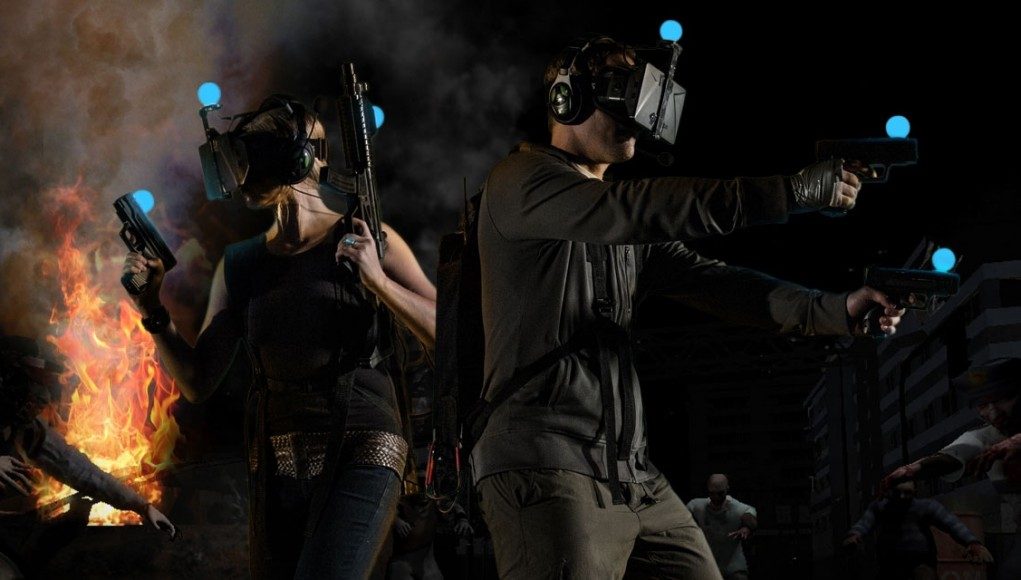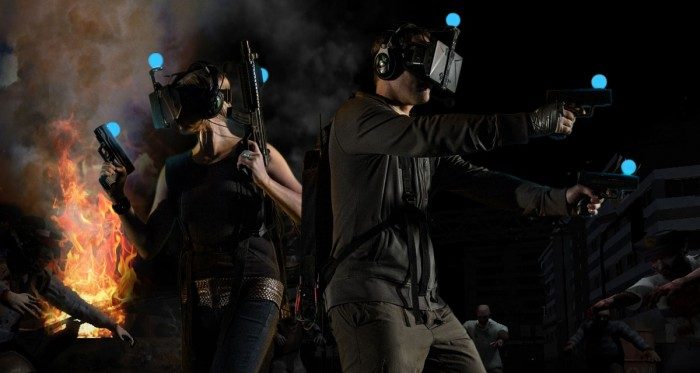Alongside being a guest contributor to RTVR through his A Wider FOV article series; Kevin Williams is a well-known figure in the immersive entertainment community—steering his consultancy KWP, he also is the chairman of the Digital Out-of-Home Entertainment Network Association (DNA), and more recently he has been associated with the launch of the latest Head Mounted Display (HMD) to enter the VR fray—in this feature he explains the thinking behind this move and the implications for the VR community in-general with this latest development.
Let me first dispel a number of misconceptions regarding the announcement of the ImmersiON-VRelia ‘PRO Blue Sky’ HMD. This is not a VR headset to compete with the proposed consumer gaming peripherals from GameFace, Sony, Google, Samsung or Oculus VR (to name a few)—it has not been developed to rival those offerings nor has it been created to be a stand-alone arcade machine. The PRO Blue Sky is simply a rugged product for the evolving world of the Commercial Entertainment (CE) industry.
The Commercial Entertainment VR Opportunity
The next question will obviously be, what really is the commercial entertainment sector?
In what has been referred to as the ‘Fourth Phase’ of the drive towards mainstream virtual reality applications; the market has been divided into three core sectors. The first is the new and emerging market of the mobile phone or tablet utilization of VR—personified best by the launch of Google Cardboard—the ability to use the growing power of mobile tech to drive virtual visualization. The second sector is that of the console (Sony) and PC (Oculus VR) route to market. But there has always been the less publicized third sector of the commercial entertainment application of VR.

Commercial entertainment application, comprises a number of disparate but similar deployments—ultimately this is the offering of VR in a public-space (defined by a growing industry as ‘Out-of-Home Entertainment’ (OOHE)). For VR, its roots are steeped in the Out-of-Home Entertainment sector. The first (phase three) application of VR there saw numerous developers creating arcade and attraction variants on early VR hardware—most notably development by the UK based Virtuality (1991-1995); the majority of early VR users experienced this cyber-environment on Virtuality platforms (be it the 1000CS, 1000SD, 2000CS or the 3000SU systems).
Fundamentally, the application of VR in a commercial entertainment environment differs greatly from the development and deployment of VR for the consumer game peripheral market; and with the latest phase of VR many of the hardware developments are not account for the many issues and requirements that development for public-space utilization brings to the table.
Let us address the miscomprehension regarding working towards commercial entertainment applications.
All consumer electrical products come with a ‘Usage Warranty’ or ‘Usage Agreement’ (sometimes referred to as a ‘Product License’): this declaration defines to the owner of the system purchased the scope of ‘usage’ that they can and cannot employ their product for to avoid possible action for ‘misuse’ of a licensed and branded product. You have to remember that the manufacturer retains the right to remove the ability to use hardware if they deem the system is being abused, or if their brand is being misrepresented.
As with consumer televisions, computers, game consoles, and a host of other electrical items, the employment of these products in a commercial (public-space) environment is categorically prohibited—mainly due to the rigors and issues of deploying in a market not envisaged/licensed for the system—but also partly due to the difficulties to police brand and representation in that sector. Along with hardware, published software content also prohibits its usage in public-space for a variety of reasons, but fundamentally due to the inability to control representation of their Intellectual Property (IP) in this sector.
Industry observers claim they have seen many of the current HMD manufacturers present their wares in public-space; but it is important to understand that the majority of supported applications seen have been done with special ‘dispensation’ extended to use their hardware as a demonstration-only system (with many stipulations) with no commercial (pay-to-play) application. Well illustrated by the use of the Oculus Rift DK2 at the Legendary Pictures booth during Comic-Con 2014. The use of VR for promotional experiences is separate to those using HMD’s in pay-for amusement style concepts that have flirting with legal action; resulting in a flurry of legal ‘Cease & Desist’ letters from HMD manufacturers appearing in in-trays at certain companies.
Though not really a ‘grey-area, some companies have decided to ignore the ‘User Agreement’ stipulations and take the risk to deploy development kit HMD’s in the public-space. Along with running afoul of the consumer hardware manufacturer, there is also the issue of the unsuitability of the available hardware to fulfill the requirements of this market. Issues ranging from the reliable support for tens of users at a time, ruggedness for a commercial environment, and the little mentioned issue of hygiene, all surmounted by general reliability of operation. Using early development kits for general application in high-footfall environments can be a trying and unrewarding endeavor (for all concerned) before the possibility of any legal action.
Many of you will be aware of the special feature I penned that discussed the many issues that need to be considered when demonstrating VR in public—the less durable the HMD the more susceptible to damage and offering a bad experience. The need to promote VR at public events is a center-plank in some head-mount manufacturers marketing strategy as they shy away from conventional advertising and look towards a hands-on approach to gain recognition.
Those observing the sector have seen experiments into the commercial entertainment sector; not only from entertainment style operations but also high level marketing agencies and publicity companies eagerly riding the VR craze and creating compelling public-space demonstrations. But unlike independent demos these applications, in the majority, will never be seen applied on anything else other than for the demonstrations originally intended.








